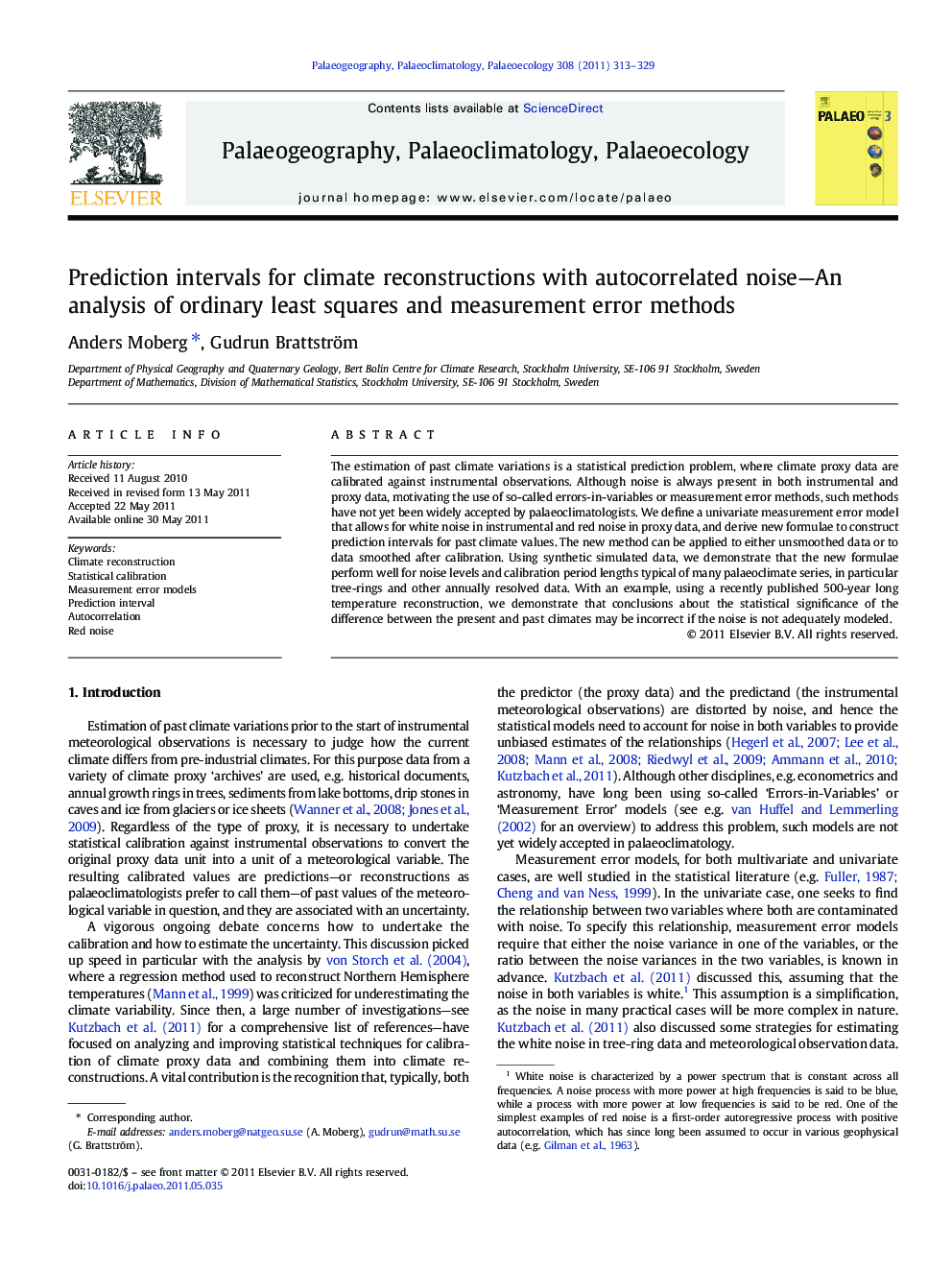| Article ID | Journal | Published Year | Pages | File Type |
|---|---|---|---|---|
| 4467127 | Palaeogeography, Palaeoclimatology, Palaeoecology | 2011 | 17 Pages |
The estimation of past climate variations is a statistical prediction problem, where climate proxy data are calibrated against instrumental observations. Although noise is always present in both instrumental and proxy data, motivating the use of so-called errors-in-variables or measurement error methods, such methods have not yet been widely accepted by palaeoclimatologists. We define a univariate measurement error model that allows for white noise in instrumental and red noise in proxy data, and derive new formulae to construct prediction intervals for past climate values. The new method can be applied to either unsmoothed data or to data smoothed after calibration. Using synthetic simulated data, we demonstrate that the new formulae perform well for noise levels and calibration period lengths typical of many palaeoclimate series, in particular tree-rings and other annually resolved data. With an example, using a recently published 500-year long temperature reconstruction, we demonstrate that conclusions about the statistical significance of the difference between the present and past climates may be incorrect if the noise is not adequately modeled.
► Calibration of climate proxy data requires adequate modeling of noise in the data. ► A measurement error model that allows autocorrelated proxy noise is defined. ► Formulae for prediction intervals for climate reconstructions are derived. ► The prediction intervals perform well for typical noise levels of good proxy data.
